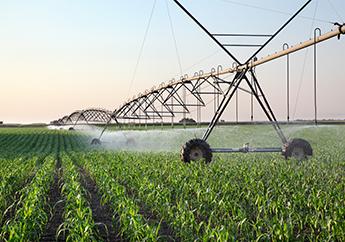N430 - Irrigation Water Conveyance
Install underground piping to create a closed system of water transport to prevent water loss from irrigations systems.
N442 - Irrigation System, Sprinkler
Upgrade sprinklers and nozzles on existing pivot irrigation systems to increase system efficiency.
N443 - Irrigation System, Surface and Subsurface
Efficiently convey irrigation water from a source to the point of application without causing erosion, water loss or reduction in water quality. This practice allows for more efficient use of irrigation water through improved application methods.
N447 - Irrigation System, Tail Water Recovery
Collect and reuse irrigated run-off water to protect surface water and conserve agricultural pesticides and fertilizer.
N554 - Drainage Water Management
Install underground piping to drain excess water away from planting areas and control release of water for optimal environmental benefits.
N587 - Structure for Water Control
Reduce chemical and nutrient loading to downstream surface water by properly retaining irrigation water on agricultural fields.
